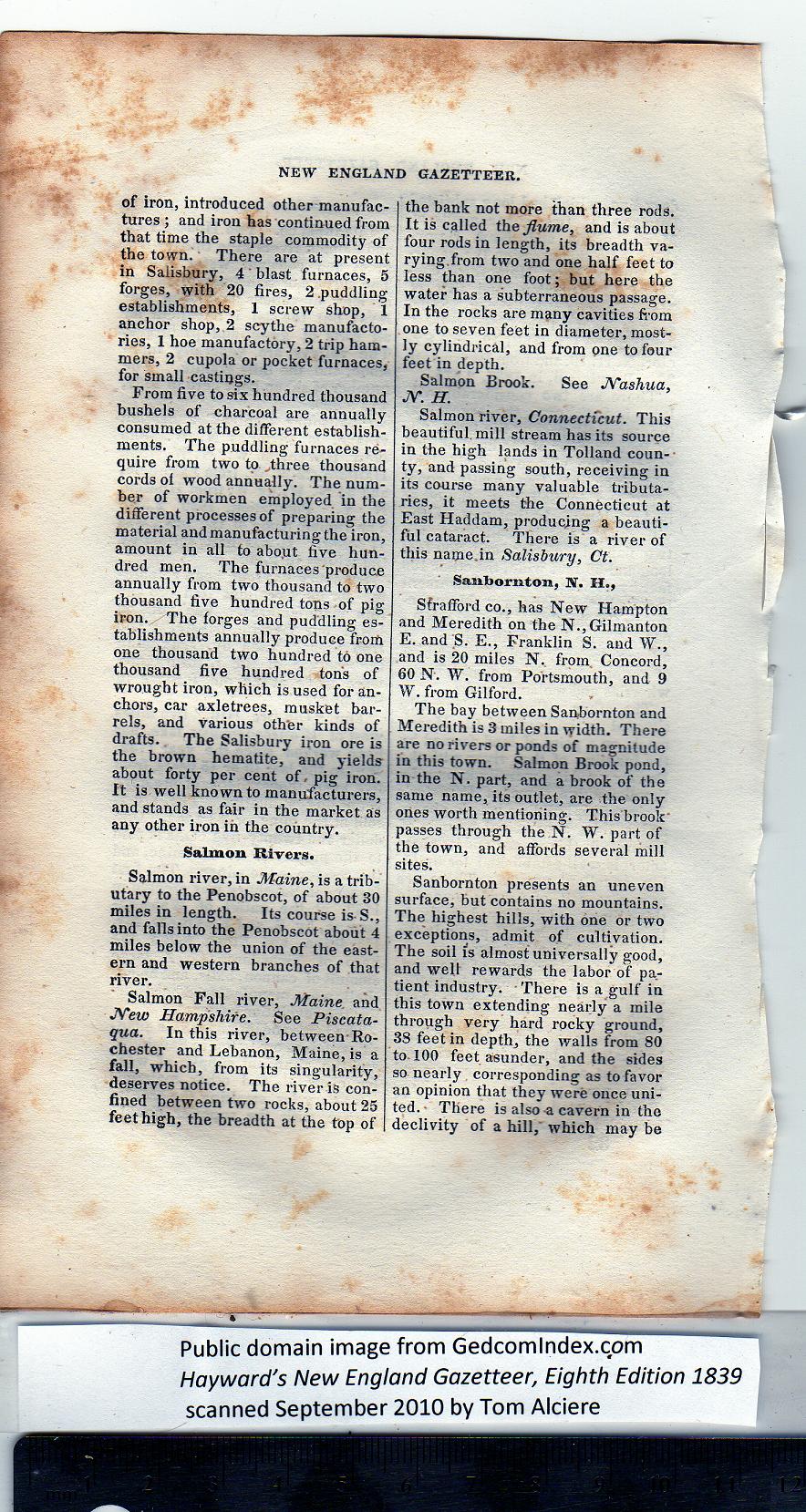|
of iron, introduced other manufac-
tures ; and iron has continued from
that time the staple commodity of
the town. There are at present
in Salisbury, 4' blast furnaces, 5
forges, with 20 fires, 2 puddling
establishments, 1 screw shop, 1
anchor shop, 2 scythe manufacto-
ries, 1 hoe manufactory, 2 trip ham-
mers, 2 cupola or pocket furnaces,
for small castings.
From five to six hundred thousand
bushels of charcoal are annually
consumed at the different establish-
ments. The puddling furnaces re-
quire from two to , three thousand
cords ol wood annually. The num-
ber of workmen employed in the
different processes of preparing the
material and manufacturing the iron,
amount in all to abojit five hun-
dred men. The furnaces produce
annually from two thousand to two
thousand five hundred tons of pig
iron. The forges and puddling es-
tablishments annually produce from
one thousand two hundred to one
thousand five hundred ton’s of
wrought iron, which is used for an-
chors, car axletrees, musket bar-
rels, and various oth'er kinds of
drafts. The Salisbury iron ore is
the brown hematite, and yields
about forty per cent of. pig iron.
It is well known to manufacturers,
and stands as fair in the market as
any other iron in the country.
Salmon Rivers.
Salmon river, in Maine, is a trib-
utary to the Penobscot, of about 30
miles in length. Its course is S.,
and falls into the Penobscot about 4
miles below the union of the east-
ern and western branches of that
river. |
Salmon Fall river, Maine and
New Hampshire. See Piscata-
qua. In this river, between Ro-
chester and Lebanon, Maine, is a
fall, which, from its singularity,
deserves notice. The river is con-
fined between two rocks, about 25
feet high, the breadth at the top of
the bank not more than three rods.
It is called thejlume, and is about
four rods in length, its breadth va-
rying, from two and one half feet to
less than one foot; but here the
water has a subterraneous passage.
In the rocks are many cavities from
one to seven feet in diameter, most-
ly cylindrical, and from one to four
feet in depth.
Salmon Brook. See JVashua,
N H.
Salmon river, Connecticut. This
beautiful mill stream has its source
in the high lands in Tolland coun-
ty, and passing south, receiving in
its course many valuable tributa-
ries, it meets the Connecticut at
East Haddam, producing a beauti-
ful cataract. There is a river of
this name.in Salisbury, Ct.
Sanbornton, N. H.,
Sfrafford co., has New Hampton
and Meredith on the N.,Gilmanton
E. and S. E., Franklin S. and W.,
and is 20 miles N. from. Concord,
60 N. W. from Portsmouth, and 9
W. from Gilford.
The bay between Sanbornton and
Meredith is 3 miles in width. There
are no rivers or ponds of magnitude
in this town. Salmon Brook pond,
in the N. part, and a brook of the
same name, its outlet, are the only
ones worth mentioning. This brook
passes through the N. W. part of
the town, and affords several mill
sites.
Sanbornton presents an uneven
surface, but contains no mountains.
The highest hills, with one or two
exceptions, admit of cultivation.
The soil is almost universally good,
and well rewards the labor of pa-
tient industry. There is a gulf in
this town extending nearly a mile
through very hard rocky ground,
3S feet in depth, the walls from 80
to 100 feet asunder, and the sides
so nearly corresponding as to favor
an opinion that they were once uni-
ted. There is also a cavern in the
declivity of a hill, which may be |
